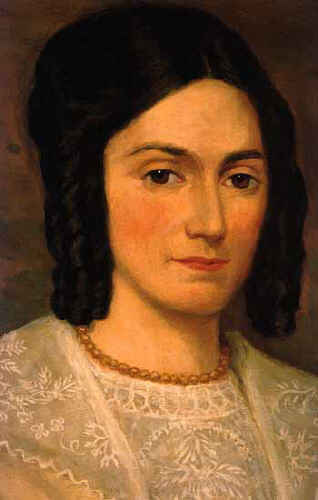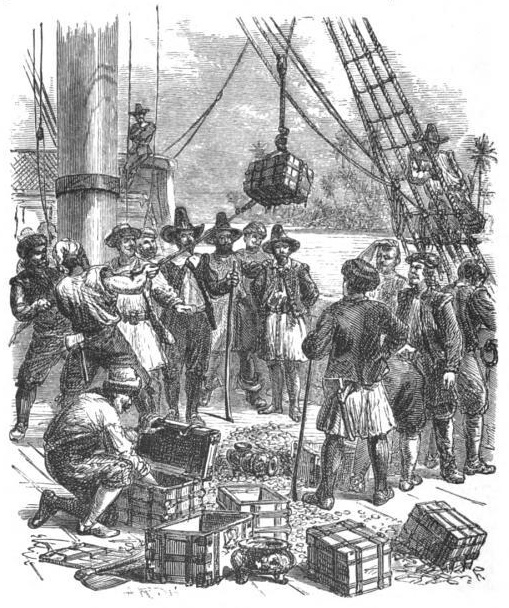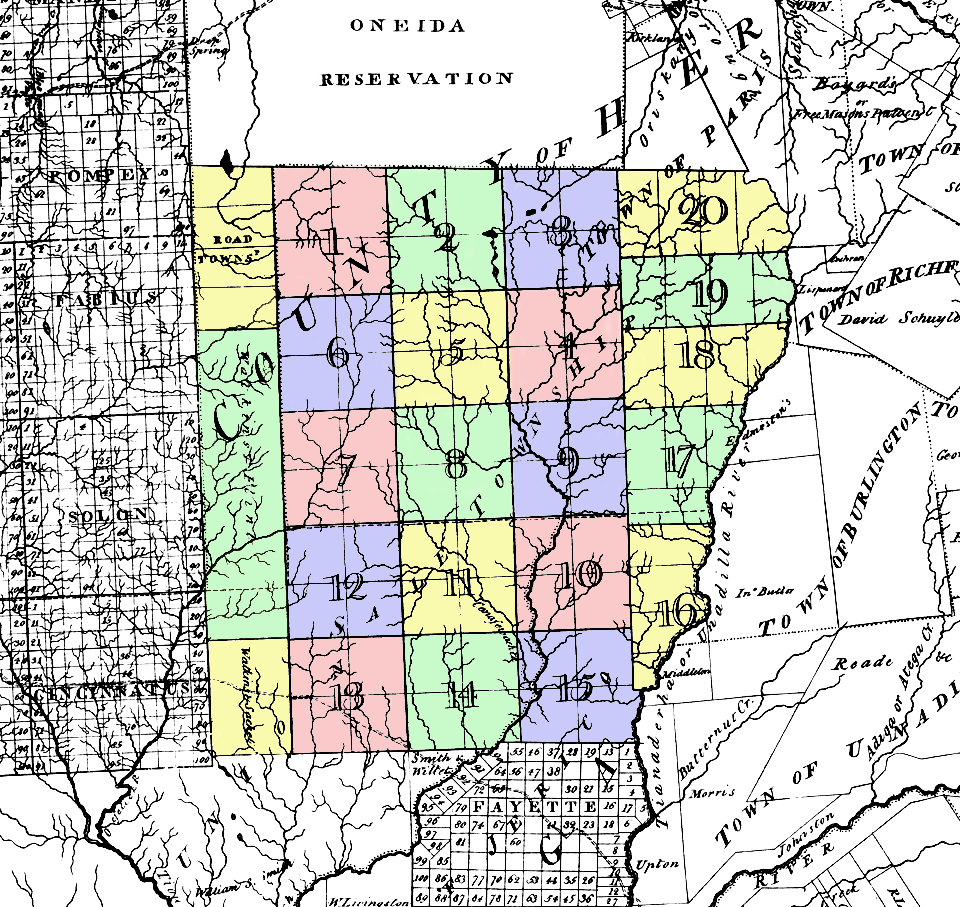|
Seer Stone (Latter Day Saints)
According to Latter Day Saint theology, seer stones were used by Joseph Smith, as well as ancient prophets, to receive revelations from God. Members of the Church of Jesus Christ of Latter-day Saints (LDS Church) believe that Smith used seer stones to translate the Book of Mormon. The culture that early Latter Day Saints developed in was steeped in Western esotericism, which included American folk magic practices.Davis, W. L. (2020). Visions in a seer stone: Joseph Smith and the making of The book of mormon. The University of North Carolina Press. Chapter 1 A seer stone in this culture was a prevalent divination tool used for a form of crystal gazing, or scrying. Seer stones are mentioned in the Book of Mormon in the Book of Mosiah, where they are also called "interpreters" and described as being used by seers to translate and receive revelations. The term "Urim and Thummim" is usually used by Latter Day Saints members to refer to the "interpreters" mentioned in the Book of Mor ... [...More Info...] [...Related Items...] OR: [Wikipedia] [Google] [Baidu] |
Hiram Page
Hiram Page ( 1800 August 12, 1852) was an early member of the Latter Day Saint movement and one of the Eight Witnesses to the Book of Mormon's golden plates. Early life Page was born in Vermont. Earlier in his life, he studied medicine which he practiced during his travels throughout New York and Canada. On November 10, 1825, Page married Catherine Whitmer, daughter of Peter Whitmer Sr. and Mary Musselman. The two had nine children together: John, Elizabeth, Philander, Mary, Peter, Nancy, Hiram, Oliver, and Kate. Early involvement in the Latter Day Saint movement Page became one of the Eight Witnesses during June 1829. He and Catherine were baptized into in the Church of Christ (later renamed the Church of Jesus Christ of Latter Day Saints)''Manuscript History of the Church'', LDS Church Archives, book A-1, p. 37; reproduced in Dean C. Jessee (comp.) (1989). ''The Papers of Joseph Smith: Autobiographical and Historical Writings'' (Salt Lake City, Utah: Deseret Book) 1: ... [...More Info...] [...Related Items...] OR: [Wikipedia] [Google] [Baidu] |
Treasure Hunting
Treasure hunting is the physical search for treasure. One of the most popular types of modern day treasure hunters are historic shipwreck salvors. These underwater treasure salvors try to find sunken Shipwreck, shipwrecks and retrieve artifacts with both commercial and archaeological value. In many instances, discovery of a wreck only occurs after searching tens of thousands of square nautical miles, thus making discovery normally impossible for archaeologists. Since the popularization of Metal detector, metal detectors in the 1970s, treasure hunting has also taken the form of beach combing for lost valuables. Beach hunters may search for modern jewelry, pocket change, or shipwreck treasure. Most metal detectors will fall in the $150–$600 price range, but can even cost upwards of several thousand dollars. Metal detecting is generally quite tedious and most enthusiasts go years without finding an actually valuable object. Metal detectors are quite useful to Archaeology, archaeol ... [...More Info...] [...Related Items...] OR: [Wikipedia] [Google] [Baidu] |
Manchester, New York
Manchester is a town in Ontario County, New York, United States. The population was 9,406 at the 2020 census. The town was named after one of its villages, which in turn was named after the city of Manchester in England. It was formed in 1822 from the town of Farmington. The Town of Manchester includes a village also named Manchester. The town is northeast of the city of Canandaigua. Lehigh Valley Railroad Manchester was an important division point and car classification yard for the Lehigh Valley Railroad and was, at one time, the largest such facility in the world. As a division point, crews and locomotives were exchanged. Freight cars were switched from track to track, organizing them for delivery to their destinations. Support services included the 30-stall roundhouse, the coaling tower, facilities for ash removal, track maintenance, car repair, a control tower, the yard office, an ice house, and the bunkhouse-restaurant. With the failure of the Pennsylvania Railroad (w ... [...More Info...] [...Related Items...] OR: [Wikipedia] [Google] [Baidu] |
Harmony Township, Susquehanna County, Pennsylvania
Harmony Township is a township in Susquehanna County, Pennsylvania, United States. The population was 512 at the 2020 census. Geography According to the United States Census Bureau, the township has a total area of , of which is land and (0.89%) is water. History The area was first settled in 1789 when a road was built to connect Stockport on the Delaware River to the Susquehanna River at Cascade Creek. Harmony Township was formed in 1809 from parts of Willingborough (now Great Bend Twp) and New Milford Townships. The present-day Ararat, Oakland, Jackson, and Thompson Townships were later split from parts of Harmony Township. The borough of Susquehanna Depot was created in 1853 from part of Harmony Township. Gustav, Charles, and Albert Stickley formed ''Stickley Brothers and Company'' in the unincorporated village of Brandt in 1883 after learning furniture-making from their uncle, Jacob Schlager, and his business partner, W. H. Brandt. The 1880 US Census shows Barbar ... [...More Info...] [...Related Items...] OR: [Wikipedia] [Google] [Baidu] |
Chenango County, New York
Chenango County is a County (United States), county located in the south-central section of the U.S. state of New York (state), New York. As of the 2020 United States census, 2020 census, the population was 47,220. Its county seat is Norwich, New York, Norwich. The county's name originates from an Oneida language, Oneida word meaning 'large bull-thistle'. The county is part of the Southern Tier region of the state. History This was long the territory of the Oneida people, one of the first Five Nations of the Iroquois Confederacy or ''Haudenosaunee''. They occupied the area until after the Revolutionary War, when they were forced off the land, although they had been allies of the patriot colonists. They were granted a small reservation, which settlers continued to encroach on. When English colonists organized counties in 1683 in what is now New York, the present Chenango County was part of Albany County, New York, Albany County. This was an enormous county, including the northe ... [...More Info...] [...Related Items...] OR: [Wikipedia] [Google] [Baidu] |
Bainbridge (town), New York
Bainbridge is a Administrative divisions of New York#Town, town in Chenango County, New York, Chenango County, New York, United States. The population was 3,308 at the 2010 census. The Administrative divisions of New York#Village, Village of Bainbridge (village), New York, Bainbridge is located at the geographic center of the town. History Bainbridge was originally settled by Native Americans of the Iroquois nations. During the American Revolutionary War, American Revolution, these tribes became allies of the British and commenced raids on American settlements. In 1779, George Washington ordered the Sullivan Expedition into what is today Upstate New York. When James Clinton, General James Clinton reached the Bainbridge area, the tribes had fled to sanctuary in Upper Canada. Clinton's forces destroyed their homes and crops, including their winter stores. The town was first settled by European Americans ''circa'' 1788, first by a group called the "Vermont Sufferers". These ... [...More Info...] [...Related Items...] OR: [Wikipedia] [Google] [Baidu] |
Three Witnesses
The Three Witnesses is the collective name for three men connected with the early Latter Day Saint movement who stated that an angel had shown them the golden plates from which Joseph Smith translated the Book of Mormon; they also stated that they had heard God's voice, informing them that the book had been translated by divine power. The Three are part of twelve Book of Mormon witnesses, who also include Smith and the Eight Witnesses. The joint statement of the Three Witnesses—Oliver Cowdery, Martin Harris, and David Whitmer—has been printed (with a separate statement by the Eight Witnesses) in nearly every edition of the Book of Mormon since its first publication in 1830. All three men eventually broke with Smith and the church he organized, although Harris and Cowdery were eventually rebaptized into the church after Smith's death. Whitmer founded his own Church of Christ. All three men upheld their testimony of the Book of Mormon at their deaths. Testimony of the Th ... [...More Info...] [...Related Items...] OR: [Wikipedia] [Google] [Baidu] |
Stovepipe Hat
A top hat (also called a high hat, or, informally, a topper) is a tall, flat-crowned hat traditionally associated with formal wear in Western dress codes, meaning white tie, morning dress, or frock coat. Traditionally made of black silk or sometimes grey, the top hat emerged in Western fashion by the end of the 18th century. Although such hats fell out of fashion through the 20th century, being almost entirely phased out by the time of the counterculture of the 1960s, it remains a formal fashion accessory. A collapsible variant of a top hat, developed in the 19th century, is known as an opera hat. Perhaps inspired by the early modern era capotain, higher-crowned dark felt hats with wide brims emerged as a country leisurewear fashion along with the Age of Revolution around the 1770s. Around the 1780s, the justaucorps was replaced by the previously casual frocks and dress coats. With the introduction of the top hat in the early 1790s, the tricorne and bicorne hats begun falling ... [...More Info...] [...Related Items...] OR: [Wikipedia] [Google] [Baidu] |
BYU Studies
''BYU Studies'' is a multidisciplinary academic journal covering a broad array of topics related to The Church of Jesus Christ of Latter-day Saints ( Mormon studies). It is published by the church-owned Brigham Young University. The journal is abstracted and indexed in the ATLA Religion Database. History Originally proposed as ''Wasatch Review'', the periodical was established as ''Brigham Young University Studies'' and was first printed in January 1959, as an issue of ''Brigham Young University Bulletin'' printed by BYU Press. In April 2012 the journal was renamed ''BYU Studies Quarterly.'' In January 2023 the journal reverted to its original name, ''BYU Studies'' (dropping ''Quarterly''). The tagline for ''BYU Studies'' is "Scholarship Aligned with the Gospel of Jesus Christ." The BYU Studies logo was changed in January 2023 to align with the logo of its parent institution, Brigham Young University. Editors The following people have been editor-in-chief An editor-in-chief ... [...More Info...] [...Related Items...] OR: [Wikipedia] [Google] [Baidu] |
Ronald W
Ronald is a masculine given name derived from the Old Norse ''Rögnvaldr'', Hanks; Hardcastle; Hodges (2006) p. 234; Hanks; Hodges (2003) § Ronald. or possibly from Old English '' Regenweald''. In some cases ''Ronald'' is an Anglicised form of the Gaelic '' Raghnall'', a name likewise derived from ''Rögnvaldr''. The latter name is composed of the Old Norse elements ''regin'' ("advice", "decision") and ''valdr'' ("ruler"). ''Ronald'' was originally used in England and Scotland, where Scandinavian influences were once substantial, although now the name is common throughout the English-speaking world. A short form of ''Ronald'' is ''Ron''. Pet forms of ''Ronald'' include ''Roni'' and '' Ronnie''. ''Ronalda'' and ''Rhonda'' are feminine forms of ''Ronald''. ''Rhona'', a modern name apparently only dating back to the late nineteenth century, may have originated as a feminine form of ''Ronald''. Hanks; Hardcastle; Hodges (2006) pp. 230, 408; Hanks; Hodges (2003) § Rhona. The names ... [...More Info...] [...Related Items...] OR: [Wikipedia] [Google] [Baidu] |
Buried Treasure
Buried treasure is a literary trope commonly associated with depictions of pirates, alongside Vikings, criminals, and outlaws in the Old West. According to popular conception, these people often buried their stolen fortunes in remote places, intending to return to them later (often with the use of a pirate's treasure map). Pirates burying treasure was a rare occurrence, with one of the only known instances being William Kidd, who was accused of burying some of his wealth on Gardiners Island. The myth of buried pirate treasure was popularized by such 19th-century fiction as " Wolfert Webber" by Washington Irving, " The Gold-Bug" by Edgar Allan Poe, and '' Treasure Island'' by Robert Louis Stevenson. The idea of treasure maps leading to buried treasure is considered a fictional device. There are cases of buried treasure from different historical periods, such as the Dacian king Decebalus and Visigoth king Alaric I, who both changed the course of rivers to hide their treasur ... [...More Info...] [...Related Items...] OR: [Wikipedia] [Google] [Baidu] |




